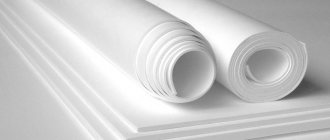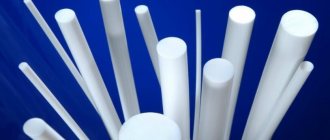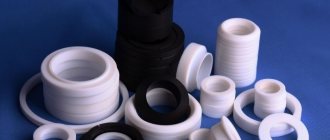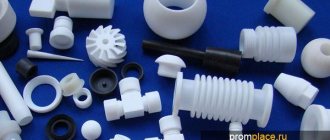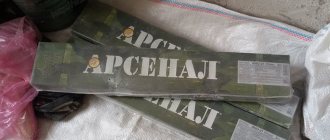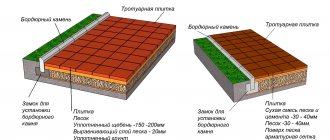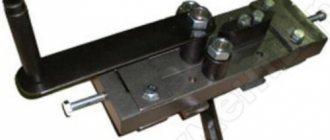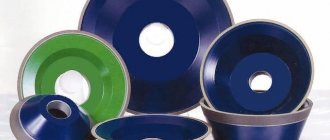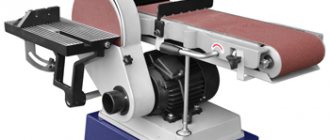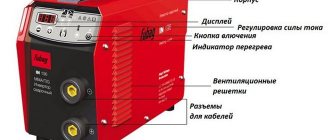For a long time, polymer materials have been widely used in various industries, medicine, pharmacology and for household purposes. Due to their good mechanical and electrical insulating properties, resistance to aggressive environments and durability, polymers have established themselves as universal materials. They successfully replace “traditional” structural materials (steel, bronze, etc.) and are used for the manufacture of electrical insulation, protective coatings, etc.
For domestic purposes, polymers are used as decorative and finishing materials and for various crafts. However, despite the large assortment, many polymers have similar properties, so we often face the problem of choosing the material most suitable for specific purposes and tasks. As an example, consider the differences between fluoroplastic and caprolon (polyamide PA-6). These materials practically do not differ in appearance and technical characteristics, which complicates the choice of which is better: caprolon or fluoroplastic . To understand this issue, let’s compare these materials and determine their advantages and disadvantages.
General properties
Fluoroplastic and polyamide (caprolon) are synthetic polymers that are characterized by high strength and hardness. Their performance properties allow them to be used as structural materials for the manufacture of parts that were previously made from metal. These are a variety of bushings, gaskets, spacers, friction pairs, cuffs, bearings, rollers, wheels, gears, piston rings, as well as electrical insulating elements. Thus, in many cases, fluoroplastic or caprolon can replace steel and non-ferrous alloys. They are in demand in all industries and have the following general advantages over metals:
- light weight;
- low cost (both in terms of production/purchase and during operation, when savings occur on repair and maintenance of manufactured parts);
- ease of processing;
- corrosion resistance;
- excellent electrical insulating properties;
- good interaction with synthetic and organic lubricants, ability to work in moving joints without any lubrication at all.
Differences
As can be seen from the table, caprolon or fluoroplastic have practically no differences in appearance , but in physical and mechanical properties they have quite significant differences. Therefore, when choosing a polymer, you should pay attention to the following criteria:
- Mechanical strength and hardness;
- Electrical insulating properties;
- Resistance to abrasion and wear;
- The magnitude of the sliding friction coefficient.
In terms of strength characteristics, caprolon is stronger than fluoroplastic , but is somewhat inferior to it in hardness and workability. Caprolon is more resistant to abrasion and wear and works better under long-term loads. The electrical insulating properties of the materials differ slightly.
It is also worth paying attention to the cost of materials. The price of caprolon is from 250 rubles. for 1 kg, and fluoroplastic - from 500 rubles. Thus, when comparing caprolon and fluoroplastic and choosing which material is better, we start from the following criteria: for working in difficult conditions and mechanisms with increased wear of parts, it is preferable to use caprolon, and in conditions of exposure to chemically aggressive environments and elevated temperatures, fluoroplastic performs better.
How to distinguish caprolon from fluoroplastic
Externally, these polymers are very similar. Parts made of caprolon and fluoroplastic are smooth and hard, and have a light color when unpainted. But differences can still be found, and we present them in the table.
| What to pay attention to | Fluoroplastic | Caprolon (polyamide) |
| Color | Snow-white, homogeneous, dense (absolutely opaque, it seems as if the material is painted in the mass with white paint) | The color is “warm”, closer to cream (looks like unpainted material of an indeterminate, natural shade) |
| How does the material feel to the touch? | Very smooth, slippery (reminiscent of hard dry soap) | Smooth but not slippery |
| The sound a part makes when it is tapped | Deaf | Voiced |
| Try scratching the surface, pressing it with your fingernail | Pressure marks remain and the surface is easily scratched | Harder - it is difficult to scratch, pressure marks do not remain |
It is even easier to distinguish two materials if it is possible to compare the weight of two parts of the same size. The fact is that fluoroplastic is more than twice as heavy as caprolon.
Production of primary raw materials
In Russia, a three-stage method for producing fluoroplastic is used:
The powder is marked depending on the particle size (F4PN-20, F4PN-80, etc.). The letter “M” and a digital designation of the amount of additive in relation to the amount of PTFE itself are added to the marking of the modified fluoroplastic.
Nowadays, the cheapest and most mature technologies are the production of fluoroplastics F4 and F3 and their varieties (F-4D, F-30L, F-30). The synthesis of fluoroplastic-2 and fluoroplastic-1 (polyvinyl fluoride) is more expensive, as it uses somewhat outdated approaches.
Advantages of fluoroplastic
Fluoroplastic is a thermoplastic made from fluorine derivatives of ethylene with a high fluorine content. It is fluorine that gives the polymer unique resistance to aggressive organic and inorganic compounds, extreme temperatures and pressures. The main advantages of the material:
- Chemical inertness (including to acids and solvents).
- Completely harmless and compatible with body tissues, which allows its use in medicine (in the production of equipment, instruments, prostheses).
- Low coefficient of friction, due to which fluoroplastic produces durable moving joint units that do not require additional lubrication.
- Hydrophobicity, low gas permeability.
- High electrical strength, dielectric properties, resistance to radiation.
- Mechanical strength, wear resistance.
- Exceptional heat resistance, low thermal conductivity (for the material to start heating, the environment must be heated to +300 °C).
- Non-flammable, self-extinguishing.
- Easily processed mechanically (grinding, cutting, drilling, milling), including manually.
Manufacturing methods
The polymer is produced by several methods, depending on the polymerization method used. Fluorine and other compounds are introduced into the monomer composition. Pyrolysis is carried out, which involves heating hydrocarbons with halogens. The process breaks down long chains and creates new compounds that react with fluorine. Further synthesis is carried out using radical polymerization, copolymerization or polymerization on an initiator carrier.
The cost of the material depends on the brand and technical characteristics. Buying in bulk is cheaper.
Source
Benefits of caprolon
Polyamide is a polymer consisting of monomers with amide groups (made from caprolactam). Its main advantage is durability: parts made of caprolon last longer than similar elements made of steel or bronze. Other advantages of the material:
- Highest mechanical strength. Wear resistance is slightly lower than that of fluoroplastic.
- Resistance to chemical influences and corrosion, to the influence of moisture and atmospheric factors.
- Caprolon does not emit toxic substances, therefore it is widely used in food equipment.
- Low coefficient of friction (lower than that of fluoroplastic), which is enhanced by the ability to “self-lubricate” during friction of caprolon parts.
- Good thermal insulation and electrical insulation characteristics.
- Heat resistance – does not lose its performance properties up to +140 °C and tolerates temperature changes well.
- It also lends itself well to mechanical processing (cutting, welding, gluing). But it is very difficult to mold it manually; you need to use milling or drilling machines.
Which one is better?
There is much in common between caprolon and fluoroplastic, for example, they are both harmless and can be used in the medical and food industries. It is difficult to distinguish them by external signs; they are resistant to chemical elements.
Compared to fluoroplastic, caprolon is less wear-resistant, so it will last less, and also caprolon has a lower coefficient of friction , it is 0.2-0.3, and for fluoroplastic -0.2. To make bushings from caprolon, the part must be processed with an accuracy of hundredths of a millimeter. Fluoroplastic is a softer material; when pressed, marks in the form of small dents may remain. Caprolon is harder and makes a dull sound when struck.
Both materials have excellent characteristics, and which one is better will depend on where and for what purpose they are used.
Source: stanok.guru
Brands and forms of release
The most popular brand of fluoroplastic is fluoroplastic-4. This is a universal material with the best dielectric and mechanical properties, as well as maximum temperature resistance. Additionally, its properties are improved by adding various fillers.
Less popular fluoroplastic-3. Its chemical and thermal stability is somewhat lower, but it is stronger and harder than fluoroplastic-4. Fluoroplast-3 can be melted to produce parts of the desired shape. It tolerates low temperatures well.
The following brands of fluoroplastic are less commonly used:
- Fluoroplastic-40 (increased impact resistance and chemical resistance).
- Fluoroplastic 4-D (increased dielectric properties, heat resistance).
- Fluoroplastic F-4K15M5 (low coefficient of friction, high wear resistance).
- Fluoroplastic 4-F K20 (increased wear resistance, ideal solution for the manufacture of elements of moving joints).
Caprolon is known as polyamide 6 (PA 6). It is also produced in modifications PA 6-MG and PA 6-MDM, which differ slightly in performance characteristics. The main differences of the PA 6-MG brand are a wider range of elongation coefficients, increased hardness, low impact strength and high thermal conductivity. PA 6-MDM is characterized by a reduced coefficient of linear thermal expansion.
Fluoroplastic and caprolon are obtained in the form of powder semi-finished products after polymerization of monomers. Next, the powder is melted, catalysts, hardeners and additives are added. The melt is used to produce blanks or finished products by extrusion or casting. Materials are produced in the form of sheets, rods, and blocks.
Manufacturing of fluoroplastic products
To obtain finished products or blanks (plates, bushings, rods) from powder, use:
The extrusion method allows you to produce longer blanks (up to 5 m), while the sizes of pressed products are limited by the size of the molds.
Fluoroplastic blanks are further processed mechanically (on metal-cutting, milling, grinding equipment). In this way, various parts and elements of machines and structural mechanisms are manufactured - from structural and support elements to bearings, sealing gaskets, cuffs, insulating liners, etc.
Material characteristics: comparison table
| Properties | Fluoroplastic | Kaprolon |
| Density | 2100–2200 kg/m3 | 1150–1160 kg/m3 |
| Working temperature | -269…+300 °С | -40…+100 °С (short-term -100…+170 °С) |
| Melting temperature | 327 °C (transition to fluid state) | 220–225 °C |
| Coefficient of thermal conductivity | 0.25 W/m×°С | 0.3 W/m×°С |
| Compressive strength | Up to 700 MPa | Up to 2100 MPa |
| Tensile strength | 20–30 MPa | 80–90 MPa |
| Compressive strength | 12–15 MPa | 100–110 MPa |
| Elongation at break | 350 % | 600 % |
| Brinell hardness | 30–40 MPa | 160–180 MPa |
| Impact resistance | Up to 10 MPa | Up to 14 MPa |
| Yield strength | 11–14 MPa | 70–80 MPa |
| Hygroscopicity in 24 hours | 0 % | 1,5–2 % |
| Maximum hygroscopicity | 0% (does not even absorb water vapor) | 6,0–7,0 % |
| Electric strength | 50 kV/mm | 30–35 kV/mm |
| Dielectric constant at 1 MHz frequency | 0,002 | 3,3 |
| Dielectric loss tangent at a frequency of 1 MHz | 0,2–03 | 0,015–0,025 |
| Specific surface electrical resistance | not less than 1017 Ohm | 1×1012–1×1013 Ohm |
| Specific volumetric electrical resistivity | 1×1017–1×1020 Ohm×m | 1×1013-1×1014 Ohm×m |
| Coefficient of sliding friction on steel in lubricant | 0,02 | 0,06 – 0,08 |
| Coefficient of sliding friction on steel without lubrication | 0,02 | 0,2 – 0,3 |
| Abrasion resistance | high | very high |
| Flammability | Does not burn | Lit |
Where did it come from?
Fluoroplastic is a compound that was first produced back in 1938. The author of the invention is considered to be Rem Plunkett. Currently, the words “fluoroplastic” and “Teflon” are used interchangeably. Engineers of the Soviet Union were able to create the same connection during the Second World War. At that time, a fluoroplastic tube was of great value: the material was issued for strictly limited purposes and only in small quantities. Each such procedure required confirmation from representatives of the special security service.
Nowadays, sheet fluoroplastic (as well as in other forms) is a very common material, widely used to achieve a variety of purposes. Access to it is no longer limited by anything (except, of course, the price).
Let's sum it up
The features of both polymers are determined by the chemical composition and features of the production technology. By changing the temperature of chemical reactions, the composition of reagents, types of catalysts, pressure, and production method, caprolon and polyurethane with different properties are obtained.
The main direction of application of caprolon is the manufacture of insulating components and parts in moving mechanisms . Due to excellent anti-friction properties and inertness to many aggressive environments, parts made of caprolon are 1.5-2 times superior to their counterparts made of steel and metal alloys in terms of resistance to wear of parts, corrosion, and temperature changes. They are cheaper and lighter than metal, fit better in mechanisms, and do not require lubrication. The coefficient of friction for steel is 1.5-2 times lower than that of polyurethane. Therefore, the wear of caprolon parts is less than that of polyurethane parts.
Polyurethane is a more versatile polymer than caprolon: from mechanical parts to sports equipment and medical supplies. It has many varieties and brands. It is produced not only in solid form, but also in liquid form. Has a wide operating temperature range. Retains properties at constantly low or high air temperatures. It is plastic and, when stretched, completely restores its original shape.
Polyurethane
It is a polymer with high elasticity and viscosity . It's resilient. Some types of it stretch to sizes that are many times larger than the original, and then easily return to their previous shape.
Polyurethane in its chemical formula contains molecules of a substituted and/or unsubstituted urethane group, as well as many other compounds.
The properties of this substance depend on the structure, chemical composition, and length of the polyurethane chain. It can be a viscous liquid, plastic or crystalline solid. Have the properties of rubber or hard plastic.
Its properties:
- Withstands force loads and mechanical processing well.
- Resistant to temperature changes, withstands - 60 ° C and + 80 ° C.
- Does not conduct electricity.
- Highly elastic.
- It is not destroyed by ozone, acids, oils, or solvents.
- Wear-resistant.
Polyurethane is used for the production of structural, insulating, and anti-friction parts in various industries. Included in glue, paints and sealants. These are raw materials for the production of equipment parts, machines, bushings, and sports tires. Sheets, bushings, rods are the main forms of solid polyurethane products.
